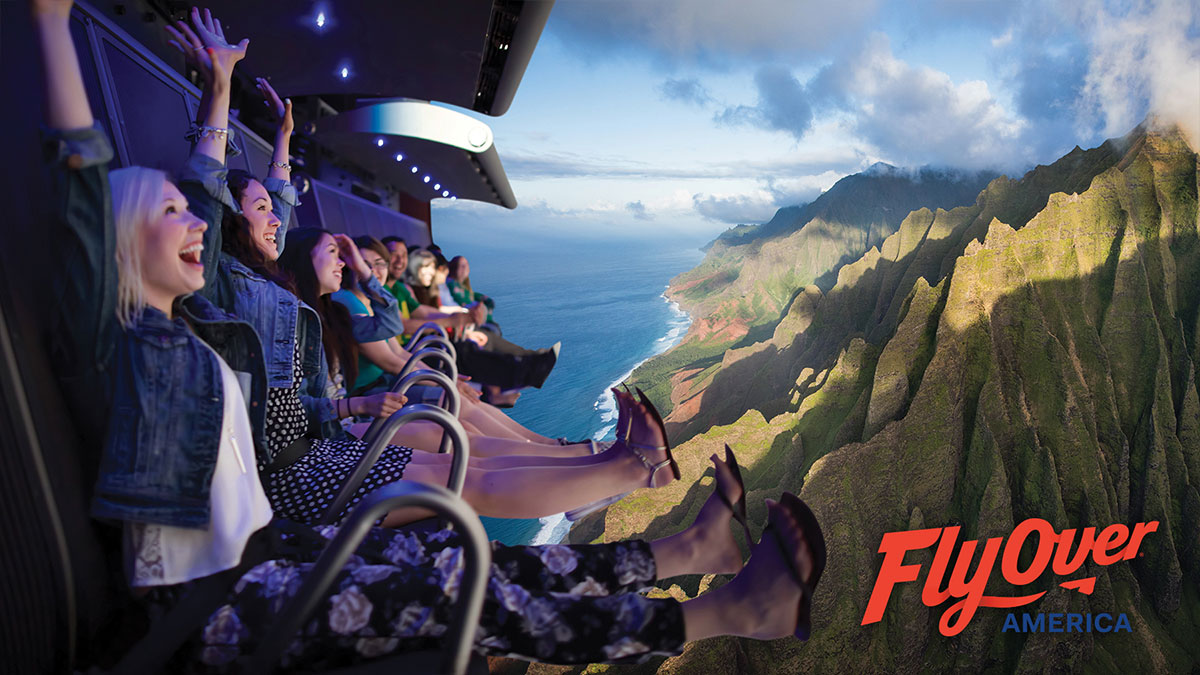Fasten your seatbelts as our Guest Editor Martin Howe explains why Flying Ride Theatres are taking off.

If your business is the business of designing and building immersive attractions – particularly flying ride theatres – you’ve got to be prepared to put in the airline time. Martin Howe Founder & CEO of TEQ4 has been doing just that; between the chicken with noodle main and the blueberry muffin desert he found time to tell AVenue about his work and what it takes to get a flying ride off the ground…
A high altitude attitude
I’ve been flying around a lot lately. Physically, from airport to airport as always, but also virtually. I’ve flown over Rivière-Rouge in Quebec at Fly Over Canada, the Canals of Amsterdam at This is Holland, through Pandora at World of Avatar, and the Aletsch glacier in Switzerland and Schönbrunn Palace in Austria at EuropaPark. I’ve even chased the most exotic Ferraris at Chateau de Chantilly in France, around the Statue of Liberty in New York and past the Houses of Parliament in London, at Ferrari Land and alongside the USAF Thunderbirds at Fly over America.
All of these wonders are possible thanks to the ever-growing number of Flying Ride Theatres that are popping up all over the world. This unique format of theatre provides a highly immersive and emotive whirlwind tour of our lands and all they have to offer.
Rick Rothschild, grandfather of the flying ride format
By coincidence I’m writing this article while I’m flying around literally and virtually, with Rick Rothschild, the grandfather of the flying ride format. Whilst working at Disney, Rick was tasked with the challenge of creating a new experience for their new California Adventure Park. Having ditched the idea of a ballooning experience because of its viewing restrictions, Rick and the team instead designed and developed a machine and a theatrical format that would emulate flying under a hang glider and that would also deliver the same experience for all seat positions. This led to the famous and highly popular Soarin’ Over California attraction.
The Devil is in the Detail
I’ve been fortunate to work with Rick on a number of projects over the years and I’ve learnt that he really is the devil behind the devil in the detail. Every single tiny element of the design is inspected, analysed, tested and critiqued. This, I suppose, is the Disney ethos coming through. The importance of this approach, particularly for flying rides, should not be underestimated; the springiness of the seat fabric, the precise amount of wind, or scent, the whole set up of the shot from the orientation of the helicopter and camera to the actors in the scene and the position of the sun as well as the time of day and time of year. And then how that relates to the motion programmed into the suspended seating to ensure that the guests really do believe that they are soaring over the landscape.
Unbelievably believable
Then consider the range of motion of those seats; they need to be able to fly like a bird with all the range of motion that this entails. It’s these tiny details, painstaking and at times frustrating in their breadth and depth, that make the difference between a good flying experience and a highly immersive and truly believable one.
That process continues, fuelled along by the pace of technological progress, each theatre being slightly better than the last; the latest laser illuminated projectors allow us to stretch the rules of physics still further, placing projectors in unusual orientations can appear to bend the light around the audience so that they’re more immersed in the scene, more light, contrast and pixels make the scene ever more realistic and Immersive 3D sound places the audience convincingly within the places they’re flying through.
So as long as there’s a great designer at the helm of the next Flying Ride experience, we can be sure that the technology will continue to make these journeys ever more believable.






